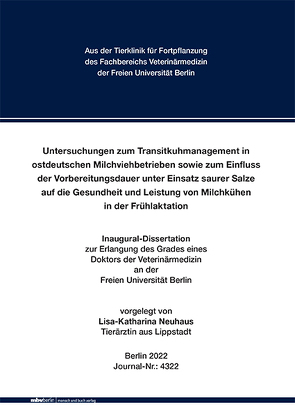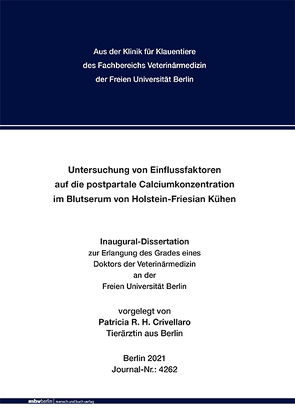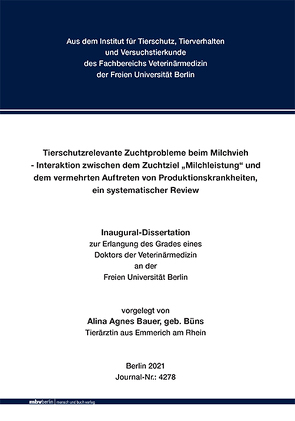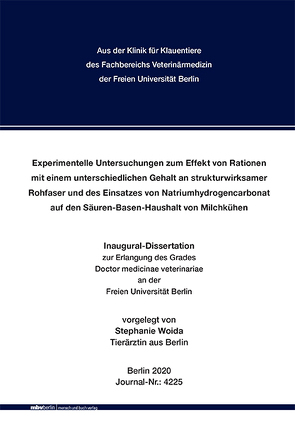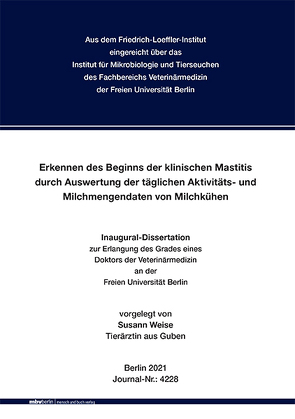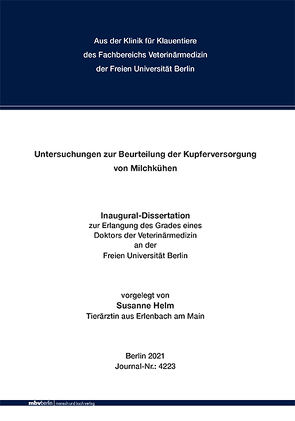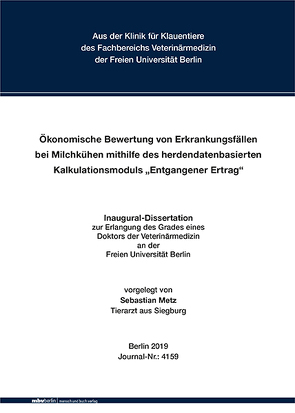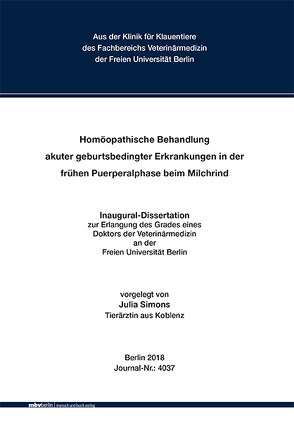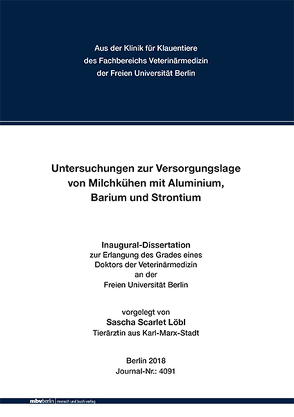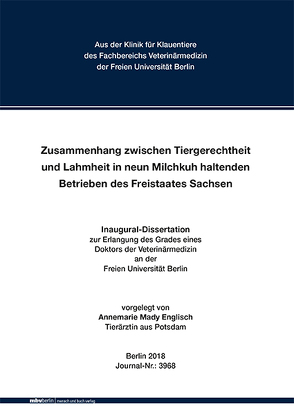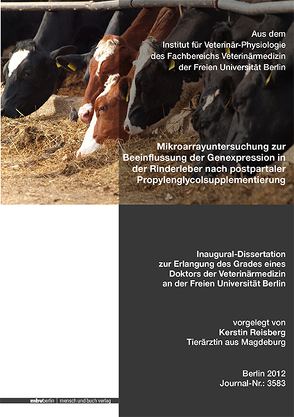Schlüsselwort: dairy cows
Untersuchung von Einflussfaktoren auf die postpartale Calciumkonzentration im Blutserum von Holstein-Friesian Kühen
Tierschutzrelevante Zuchtprobleme beim Milchvieh – Interaktion zwischen dem Zuchtziel „Milchleistung“ und dem vermehrten Auftreten von Produktionskrankheiten, ein systematischer Review
Experimentelle Untersuchungen zum Effekt von Rationen mit einem unterschiedlichen Gehalt an strukturwirksamer Rohfaser und des Einsatzes von Natriumhydrogencarbonat auf den Säuren-Basen-Haushalt von Milchkühen
Erkennen des Beginns der klinischen Mastitis durch Auswertung der täglichen Aktivitäts- und Milchmengendaten von Milchkühen
Untersuchungen zur Beurteilung der Kupferversorgung von Milchkühen
Ökonomische Bewertung von Erkrankungsfällen bei Milchkühen mithilfe des herdendatenbasierten Kalkulationsmoduls „Entgangener Ertrag“
Homöopathische Behandlung akuter geburtsbedingter Erkrankungen in der frühen Puerperalphase beim Milchrind
Untersuchungen zur Versorgungslage von Milchkühen mit Aluminium, Barium und Strontium
Zusammenhang zwischen Tiergerechtheit und Lahmheit in neun Milchkuh haltenden Betrieben des Freistaates Sachsen
Mikroarrayuntersuchung zur Beeinflussung der Genexpression in der Rinderleber nach postpartaler Propylenglycolsupplementierung
Bücher zum Thema dairy cows
Sie suchen ein Buch über dairy cows? Bei Buch findr finden Sie eine große Auswahl Bücher zum Thema dairy cows. Entdecken Sie neue Bücher oder Klassiker für Sie selbst oder zum Verschenken. Buch findr hat zahlreiche Bücher zum Thema dairy cows im Sortiment. Nehmen Sie sich Zeit zum Stöbern und finden Sie das passende Buch für Ihr Lesevergnügen. Stöbern Sie durch unser Angebot und finden Sie aus unserer großen Auswahl das Buch, das Ihnen zusagt. Bei Buch findr finden Sie Romane, Ratgeber, wissenschaftliche und populärwissenschaftliche Bücher uvm. Bestellen Sie Ihr Buch zum Thema dairy cows einfach online und lassen Sie es sich bequem nach Hause schicken. Wir wünschen Ihnen schöne und entspannte Lesemomente mit Ihrem Buch.
dairy cows - Große Auswahl Bücher bei Buch findr
Bei uns finden Sie Bücher beliebter Autoren, Neuerscheinungen, Bestseller genauso wie alte Schätze. Bücher zum Thema dairy cows, die Ihre Fantasie anregen und Bücher, die Sie weiterbilden und Ihnen wissenschaftliche Fakten vermitteln. Ganz nach Ihrem Geschmack ist das passende Buch für Sie dabei. Finden Sie eine große Auswahl Bücher verschiedenster Genres, Verlage, Autoren bei Buchfindr:
Sie haben viele Möglichkeiten bei Buch findr die passenden Bücher für Ihr Lesevergnügen zu entdecken. Nutzen Sie unsere Suchfunktionen, um zu stöbern und für Sie interessante Bücher in den unterschiedlichen Genres und Kategorien zu finden. Unter dairy cows und weitere Themen und Kategorien finden Sie schnell und einfach eine Auflistung thematisch passender Bücher. Probieren Sie es aus, legen Sie jetzt los! Ihrem Lesevergnügen steht nichts im Wege. Nutzen Sie die Vorteile Ihre Bücher online zu kaufen und bekommen Sie die bestellten Bücher schnell und bequem zugestellt. Nehmen Sie sich die Zeit, online die Bücher Ihrer Wahl anzulesen, Buchempfehlungen und Rezensionen zu studieren, Informationen zu Autoren zu lesen. Viel Spaß beim Lesen wünscht Ihnen das Team von Buchfindr.
